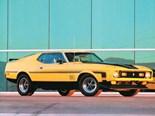Ford V8 + Mercury V8 1937-1948 - Buyer's Guide





|

|
Here's all the info you need on Ford's famous flattie
Ford V8 + Mercury V8 1937-1948
It would take a brave man or a crackpot to launch a new eight-cylinder car into a market that was being destroyed by the worst economic downturn in human history. Arguably, Henry Ford was both.
The company founder was well known for his opposition to change and the battles that ensured with son Edsel over the company’s future direction threatened its very survival.
However it did survive the Great Depression with a V8 that was outstanding for its simplicity and ease of manufacture. The block was cast as a single unit with a steel crankshaft and three main bearings. It should have been a very durable engine but for reasons largely attributable to Henry’s demand for ‘thermo siphon’ cooling, V8s built prior to 1937 suffered overheating problems.
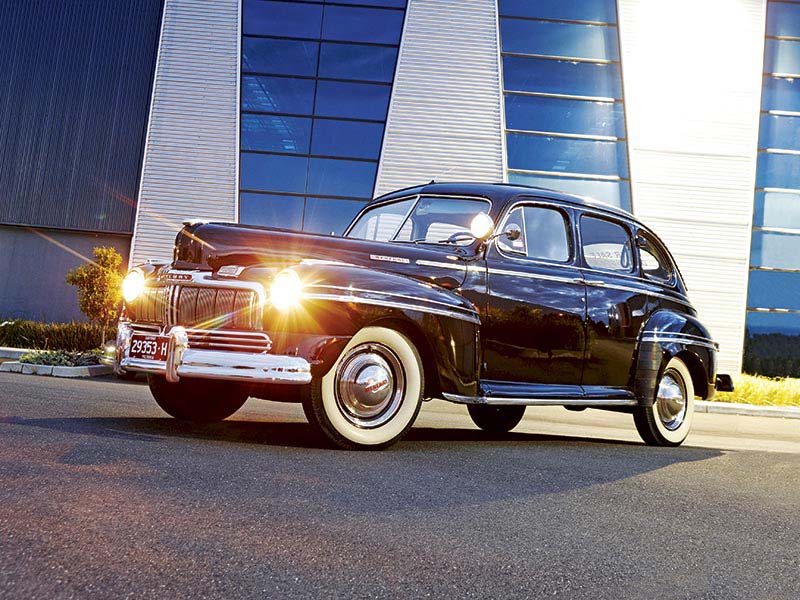
The white-metal bearing shells were also an issue but Edsel and his engineering team eventually won the day. Post-1937 engines with their ‘24 bolt’ cylinder heads fulfilled expectations and could be tuned to develop several times the power of a standard motor. Other mechanical improvements included cable rather than rod-operated brakes with hydraulics appearing on 1939 models.
By 1937 and as the V8 entered its third styling phase, headlights finally became integral to the front bodywork and an ‘alligator’ or rear-hinged bonnet was adopted. Although the design of the engine had been quite radically changed, the basic V8 still displaced 221 cubic inches (3.6 litres) and produced 85 horsepower (63kW). In the USA, a downsized 60hp version available to commercial users and buyers on a budget.
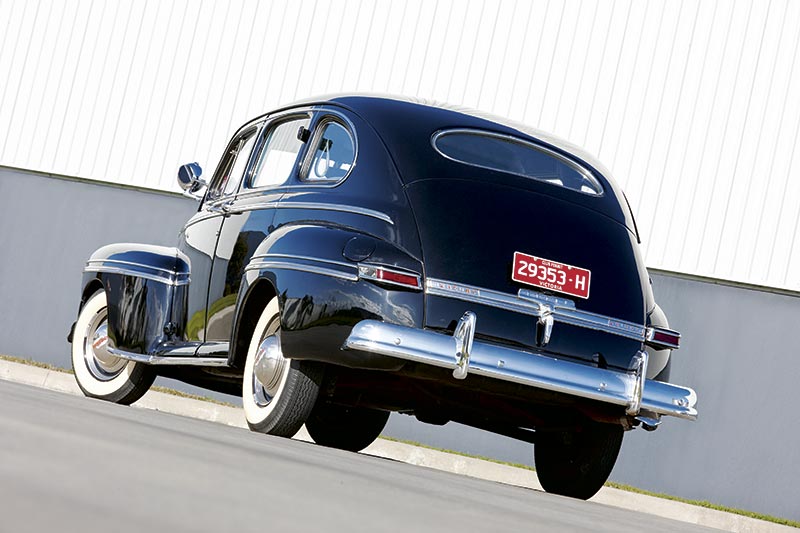
As documented by criminals Bonnie and Clyde, who used stolen Ford V8s as getaway cars, they were a quick vehicle and capable of around 130km/h. That reputation grew after 1939 when Ford introduced a 3.9-litre Mercury version with 70kW against the 3.6-litre car’s 63kW. Also Edsel Ford’s brain-child, the Mercury was intended to bridge the price and equipment gap between Ford’s basic range and the exclusive Lincoln.
The next major alteration to Ford’s mainstream design came in 1942; just in time for the parent company to switch most of its resources to military manufacturing. Therefore the boldly-reshaped passenger models were most often seen in the guise of olive drab ‘Staff Cars’.
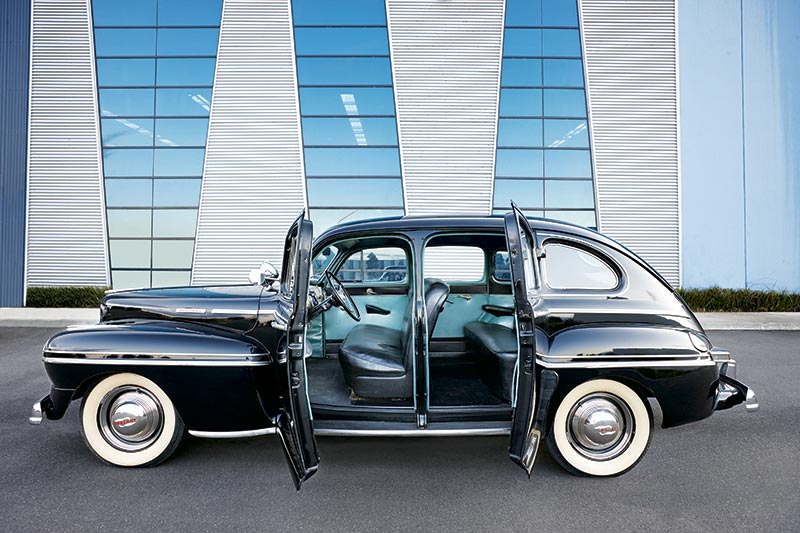
Needing to recoup the money it ploughed into tooling the '42 shape, Ford’s 1946-48 sheetmetal remained as it had been since prior to the Pearl Harbour attack. With only detail upgrades to the grille, side-light positioning and other brightwork, the shape would survive until replaced by the radically different 1949 range. All Fords from 1946 used the larger 3.9 motor and delivered at least 100 horsepower.
Australia, even during the Depression, was a major Ford market. Fleet and government sales, hire-car and other commercial vehicle sales helped justify the company’s investment in manufacturing plants. Locally-assembled cars could be sold at considerably lower prices than fully-built imports and include locally-devised features including splined internal handles that predated their use in American Fords by a decade.

In addition to the celebrated ‘coupe utility’ version, Ford Australia offered Roadster versions of its ute and also Sloper two-door coupes with more passenger space than US lookalikes.
After the war, with cash scarce and buyers reluctant to spend on cars that didn’t earn their keep, Ford very much went back to basics. The two-door passenger models that had disappeared in 1940 didn’t return and Australian sales were confined to four-door sedans and all-steel utilities.
In the USA things were very different. With all the car makers desperate to debut new designs, Ford had to choose between immediate sales and a larger slice of post-war prosperity. Sales dipped by 120,000 units on the V8’s 1940 tally as the company - now minus its irascible founder who had died in 1947, prepared to launch its radical 1949 range.
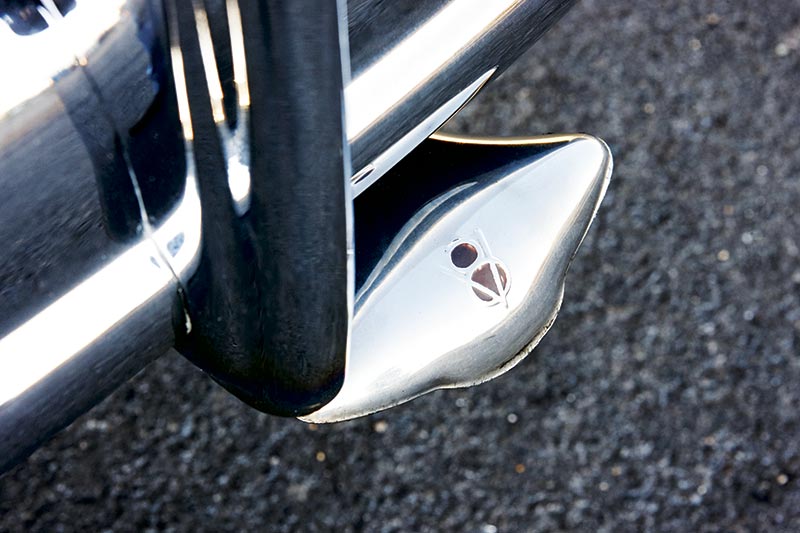
ON THE ROAD
When you climb – as you do – aboard one of these cavernous Fords, be prepared to adapt to the way things were 70-80 years ago. Highways, if paved at all, were haphazard and poorly maintained and even suburbs we today regard as ‘dress circle’ had roads that were corrugated and unsealed.
Through all of this ploughed the big Fords; lugging in top gear with their immense torque on display and wheels chattering at either end of massive transverse springs.
At higher speeds, that torque ensured fully-laden Fords were able to overtake without the driver needing to downshift and maintain the 85-90km/h cruising speeds that were considered ‘low flying’ during the 1930s and 40s.
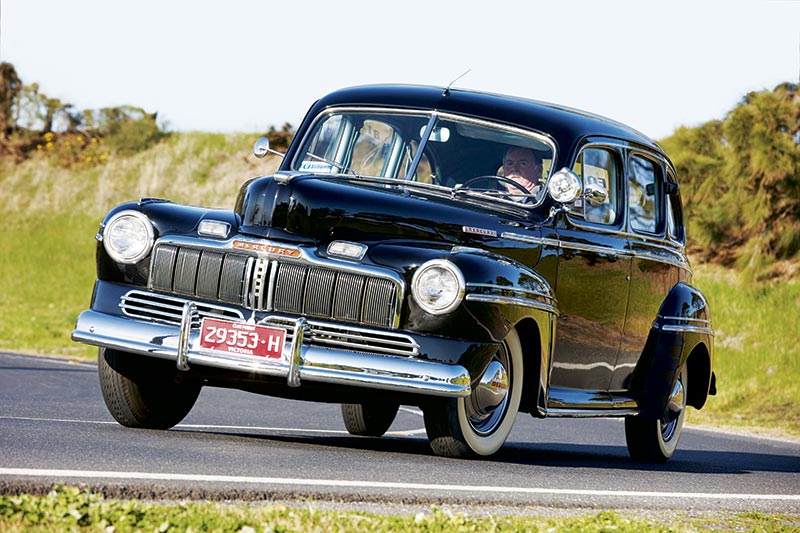
Inside one of these roomy cars may have been a typical family of six or more; the larger children abreast on the broad back seat while a smaller one or two clung to a parental elbow up front. No belts, but no worries; this old Ford can hit a 'roo with barely a scratch.
In today’s cut and thrust world, those massive bumpers and real steel mudguards still issue a stern warning to lighter, more modern vehicles but surviving a serious crash would be problematic.
V8s built after 1938 came with hydraulic brakes but they still weren’t exceptional and anyone contemplating a steep descent needs to select a lower gear – maybe going right back to first – and keep away from the brake pedal in case they are needed for an emergency stop.
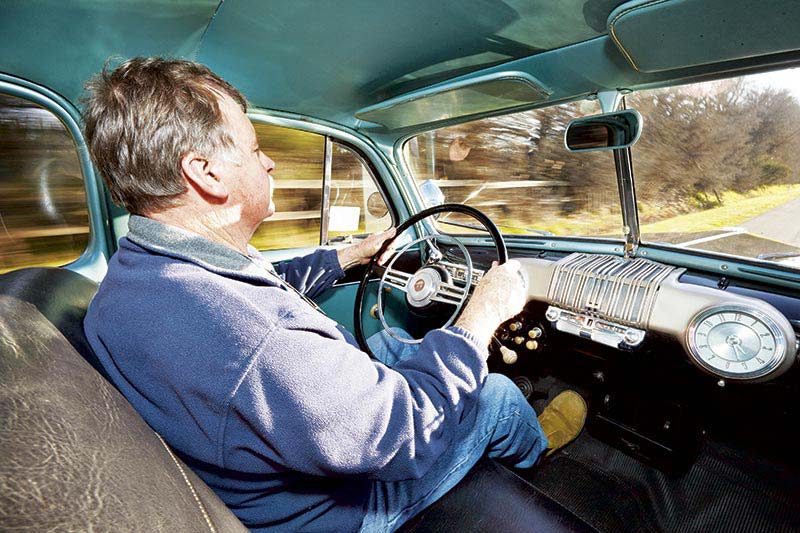
Steep uphill climbs, sand, mud, water and even snow are where the high-clearance Fords with their slow-revving, torque-laden engines shine. Only once in Australia’s history of long-distance trials did a crew ‘clean-sheet’ a major event and that happened in 1954 when ‘Gelignite’ Jack Murray’s V8 Ford took victory in the Redex Trial.
The transverse leaf springs were, by 1948, archaic and limited in their ability to adapt. However with corrugations popping up after any decent downpour and railway crossings seemingly designed to rip the front end out of lightly-built cars, the Fords hung together pretty well.
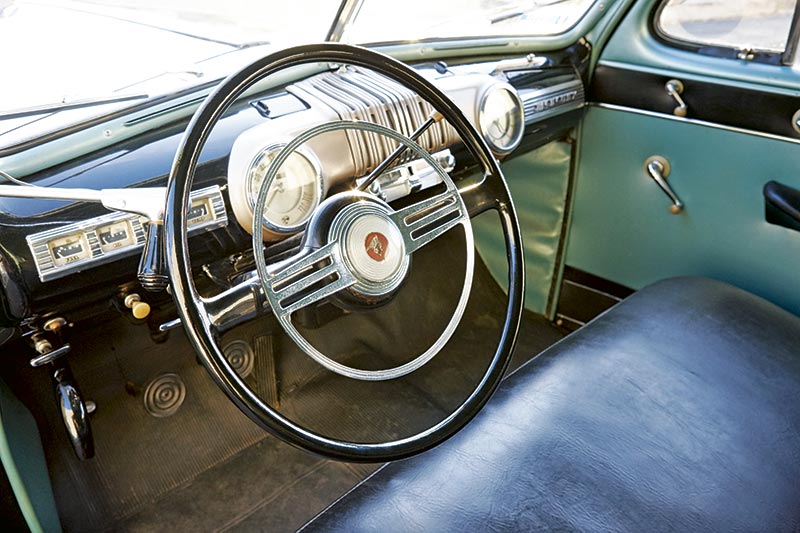
Just a look at the massive steering wheel – supplied with a full-circle horn ring if you got the Deluxe – and your biceps start to wince. Shifting one of these hefty cars on their narrow rubber from a tight parking bay is a test of strength and coordination. Once on the move they feel better, however Mercury owner Rick Maydom recommends radial tyres over the authentic but unremittingly awful cross-plies.
BUYING
Popularity over many years, simplicity and strong club support should ensure a good supply of cars and stable values but excellent, factory-stock Aussie cars do not appear all that often in the classifieds.
Spending $20,000 would, not long ago, secure a very tidy locally-built sedan. Values now have climbed to the point where basic Fords cost almost $30,000 and a four-door Mercury with enhanced trim and punchier motor are 30 percent dearer.

Where Australia’s range after WW2 was basic, the US passenger car range comprised 11 variations including a ‘woodie’ station wagon and rare Sportsman roadster. With just a handful surviving, the timber-trimmed soft-tops now sell for around US$200,000.
The difference in price between a standard and modified car can be significant and buyers need to consider which will be the wiser long-term acquisition. Rebuilding a standard V8 isn’t cheap, but the cost is peanuts when pitted against the price of a stunning but financially-draining street rod.
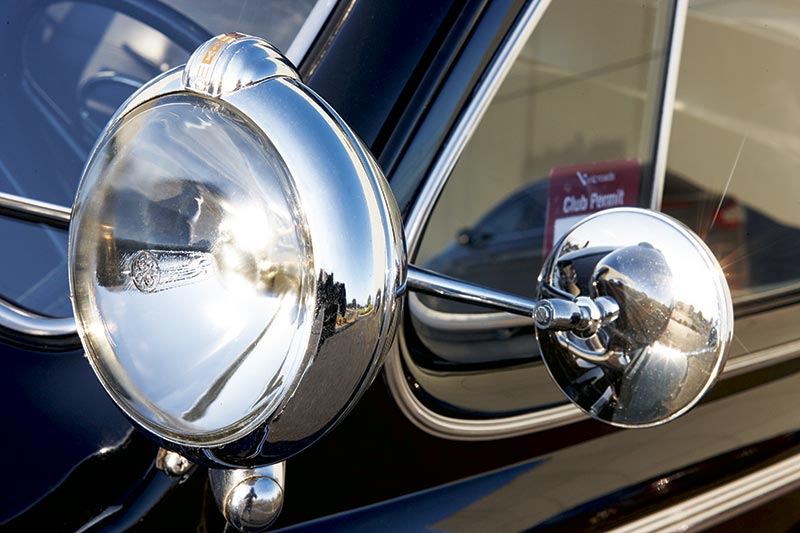
BUYER'S CHECKLIST
Body & Chassis
A massive steel chassis and panels that are hard to dent with a sledgehammer still don't provide immunity from terminal rust so be wary of restoration 'projects'. A lot of remanufactured body panels are available but cost and quality vary. Inspect bonnet edges, the firewall, rear spring attachment points and joints between mudguards and the main body. Look at the chassis, especially around body attachment points and spring mounts. Repairing and re-plating chromed parts can add many thousands to restoration cost so finding a car with its brightwork in decent condition can save $3000-$5000.
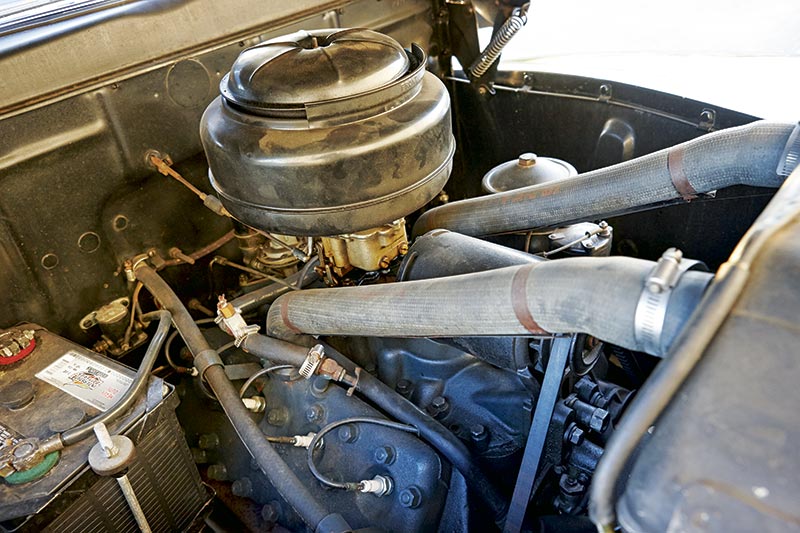
Engine & Transmission
Flathead Ford motors rival small-block Chevrolets as the best-documented engines ever made. Everything from simple maintenance to extracting prodigious power is easily found online or in books and the parts you will need are generally affordable. Providing the overheating is controlled and electrical components behave there is little that will stop one of these simple and durable power units. Bearing knock on start-up will mean a rebuild is due, as does a blue trail of oil smoke when the throttle is closed. The gearbox is equally simple and easily repaired. Beware cars that jump out of gear.
Suspension & Brakes
Lurching, pitching and bouncing when the car is being driven on a typical suburban road warns of work needed beneath the car. Look first for rusted or cracked spring leaves, loose shackles and leaking shock absorbers. Repairs are simple and not expensive. V8 Ford brakes were lousy from the outset and any deficiency in the hydraulics or wear to the network of rods used before 1939 can make the car dangerously unstable. If under light pedal pressure it pulls significantly or begins to weave, be prepared for some expense on both the steering and brake systems. Hydraulic upgrades are available.

Interior & Electrics
These cars originally used six-volt electrics and some do survive in this format. More common however are 12 volt conversions, with the new components collectively costing around $1000. Factory accessory heaters were popular, especially in frigid areas of the USA. Gasoline-powered units could be run with the engine off but most cars have the conventional type which should deliver a decent blast of warm air. Correct seat fabric is still available from US specialists, as are sets of reproduction seat springs. Compare before buying as Australian cars had their own seat construction.
SPECIFICATIONS
1937-1948 Ford & Mercury V8
ENGINE 3621 or 3916cc V8 with side valves and single downdraft carburettor
POWER & TORQUE 70.5kW @ 3600rpm, 243Nm @ 2000rpm
PERFORMANCE 0-96km/h 21 seconds (1947 sedan)
TRANSMISSION three speed manual
SUSPENSION: Live axle with transverse leaf spring (f&r)
BRAKES: drum front/rear
TYRES: 6.00 x 16 cross-ply
PRICE RANGE: $10,000-45,000 (sedan and coupe)
CONTACT: early Ford clubs in all States
btc-bci.com/~billben/flathead.htm
Unique Cars magazine Value Guides
Sell your car for free right here
Get your monthly fix of news, reviews and stories on the greatest cars and minds in the automotive world.
Subscribe

.jpg)










